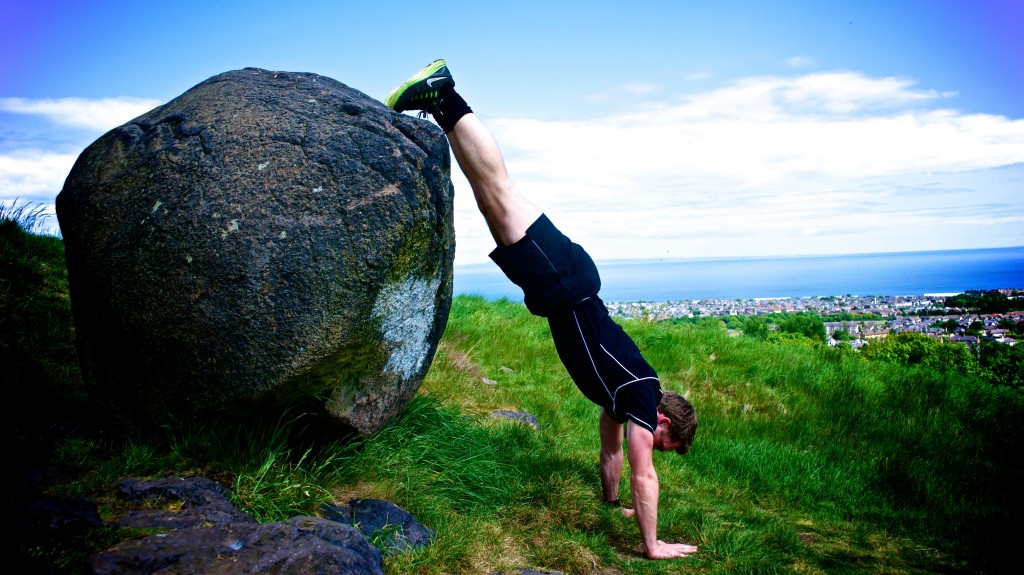Just doing a standard push-up may help you get a bit more of a defined chest, but it will only get you so far, and sooner or later you will find that your progress has plateaued, and you will start asking yourself if push-ups are effective at building muscle. The reason the plateau happens is because for muscle growth, you need to lift heavy and challenging things, and as your muscles get stronger, the weight of your body will be less challenging to lift. But push-ups can build muscle, you just need to alter them a little. Here, I’ll explain why you should keep push-ups in your routine, and go over ways in which you can easily alter your press-ups to improve the results you get from them.
Why push-ups rock
Don’t give up on the push-up if you are finding they aren’t giving your the results you want – they rock! The primary muscles that they work are the chest, shoulders and triceps. Not only are these typical ‘vanity’ muscles, but exercising these muscle groups is a synergistic manner is excellent for developing upper body strength. A push-up also develops your core strength and helps with balance, both of which are required in a various sports and other exercises (whether you be a weight lifter or cross-fitter). With this synergy in mind, they can be considered much more effective than working a muscle in isolation. Push-ups can also be done virtually anywhere, and require very little/ no equipment (see examples below) and the few bits of equipment you may need for some push-ups can easily and effectively be hashed together at home. You don’t need a gym membership, you don’t need to do any travelling or spend any significant amounts of time on them, and more importantly, they DO build muscle.
The basics of muscle growth
As a general rule, you need to lift heavy/ challenging things (to stimulate growth1,2) and you need to eat the right food (to allow the growth). Diet is arguably more important than exercising, and the basics of what your diet should look like have been covered in an earlier post, but without either a good diet or exercise, any progress will be slow/ non-existent which will only frustrate you and possibly cause you to injure yourself.

Alternatives to the basic push-up
Decline push-up – To perform a decline push up, you simply need something higher up than the floor that you can rest your feet on; a chair or sofa is a good place to start. Once your feet are elevated, simply perform the push-up as normal.
The decline push-up puts more of your body weight on your hands, effectively increasing the weight that your chest is required to push up, meaning you are lifting a heavier thing.
Sprint push-ups – No, I don’t mean running on your hands in a strange wheel-barrow race manner. Sprinting is anything that requires a burst of energy which can only be done for a short period of time. This can be done in a variety of forms, including press-ups. Typically, sprinting is associated with running, and running is not often associated with muscle growth, but this is because runners often run long distances which requires massive amounts of energy – sprinting is different. In fact, sprinting has been shown to increase muscle synthesis in the target muscles3 , and when you sprint with a push-up, the target muscles are the chest.
For sprint push-ups, simply do as many push-ups as you can in 30 seconds.
Weighted push-up – For these you can fill a back-pack with something heavy (text books, cast iron free-weights, bags of rice or anything heavy), and simply put it on your back and do regular push ups. This way, you will increase the weight you are pushing up with your chest. When doing this, make sure the shoulder straps are tight, and the heavy object is not loose in the bag. If you use free weights you can pad the rest of your bag out with a towel or some clothes to stop the weight slipping and sliding around. This will also make doing weighted push ups much more comfortable!
You could also wear a weight vest to do these exercise, which is more secure than a back pack.
One-hand push-up – A little more advanced that the above variations, and this effectively doubles the weight your chest will be pushing (and is great for your core strength too!). To do a one-handed push-up move your feet a little further apart than a regular push-up, move the ‘pushing’ hand more in the centre of your body, and put the other hand behind your back. Then simply try and do a push-up!
Plyometric push-up – ‘Plyomertric’ basically means ‘jump’, so a plyometric push-up is one where you push up from the floor with explosive energy so your hands leave the ground. From here, you have a number of options depending on how high you get. You can simply go back down the the ground and repeat (if you don’t get very high), you can have a slightly raised platform on either side of your hands which you can jump to, do a push-up, then jump back to the floor. Or you can jump, clap your hands, and land back on the ground. You can even try and push your whole body off the ground, or try and clap your hands behind your back, be be careful, you could end up smacking your face on the floor!
The plyometric push up works on the same principle as the sprint push up, requiring burst energy in the target muscles.
Free style! – Don’t be bound too much by guides, make up your own push-up! It can be a combination of 2 of the above (like a plyometric push-up with a weighted push-up for example) or it can be something brand new! Experiment with different objects around the house (within reason). Try and work different muscles into the movements and have some fun.
Summary
Push-ups can build muscle, but you need to get a bit more creative with them if you do want to see any progress. The above examples are a few of many ways in which you can keep your push-ups delivering.
%CODE_PUSH%
References
1. S. M. Phillips. (1997). Mixed muscle protein synthesis and breakdown after resistance exercise in humans. American Journal of Physiology. 273 (1), E99-E107.
2. K. E. Yarasheski . (1993). Acute effects of resistance exercise on muscle protein synthesis rate in young and elderly men and women.American Journal of Physiology. 265 (2), e210-e214.
3. Smith AA, Toone R, Peacock O, Drawer S, Stokes KA, Cook CJ. (2013). Dihydrotestosterone is elevated following sprint exercise in healthy young men. J Appl Physiol. 114 (10), 435-40.
Images courtesy of practicalowl and livingfitnessuk

